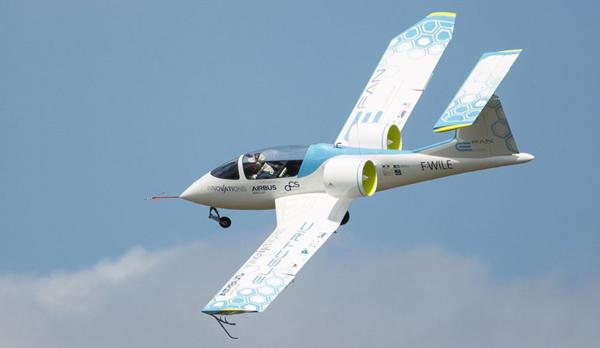You are here
Warming to lithium-ion, Toyota charges up its battery options
By Reuters - Oct 31,2016 - Last updated at Oct 31,2016
TOYOTA CITY, Japan — Engineers at Toyota Motor Corp. say they have tamed volatile lithium-ion battery technology, and can now safely pack more power at no significant extra cost, giving the Japanese automaker the option to enter the growing all-electric car market.
While rivals, including Tesla Motors and Nissan Motor Co., began adopting lithium-ion battery technology nearly a decade ago, Toyota has largely held back due to concerns over cost, size and safety.
Lithium-ion batteries can be unstable and have been blamed for incendiary Samsung smartphones and smoking Dreamliner airplanes.
Having Toyota endorse lithium-ion will be a fillip for the developing technology, and gives the automaker the option to produce for an all-electric passenger car market which it has avoided, preferring to put its heft behind hydrogen fuel-cell vehicles (FCVs).
Toyota says its Prius Prime, a soon-to-be-launched plug-in electric version of the world’s top-selling gasoline hybrid, will use lithium-ion batteries, with enough energy to make the car go around 60km when fully charged before the gasoline engine kicks in. Because of different methodology in measuring a car’s electric mode range, the Prime’s 60km range will be listed in the United States as around 40.2km.
‘Safety, safety, safety’
Many lithium-ion car batteries use a chemical combination of nickel, cobalt and manganese. These store more energy, take a shorter time to charge, and are considered safer than other Li-ion technologies.
But they can still overheat and catch fire if not properly designed, manufactured and controlled.
“It’s a tall order to develop a lithium-ion car battery which can perform reliably and safely for 10 years, or over hundreds of thousands of kilometres,” said Koji Toyoshima, the chief engineer for the Prius.
“We have double braced and triple braced our battery pack to make sure they’re fail-safe... It’s all about safety, safety, safety,” he told Reuters.
Toyota has mainly used the more mature nickel-metal hydride batteries to power the motor in the conventional Prius, widely regarded as the forefather of the “green” car, though it did use some lithium-ion batteries from 2009 in its first plug-in hybrid Prius, around the time the first all-electric cars powered by lithium-ion batteries — such as the Tesla Roadster and Nissan Leaf — came on to the mass market.
Toyota’s confidence in its battery’s safety and stability comes from improved control technology that precisely monitors the temperature and condition of each of the 95 cells in its new battery pack.
“Our control system can identify even slight signs of a potential short-circuit in individual cells, and will either prevent it from spreading or shut down the entire battery,” said Hiroaki Takeuchi, a senior Toyota engineer involved in the development.
Working with battery supplier Panasonic Corp. — which also produces Li-ion batteries for Tesla — Toyota has also improved the precision in battery cell assembly, ensuring battery chemistry is free of impurities.
The introduction of even microscopic metal particles or other impurities can trigger a short-circuit, overheating and potential explosion.
“The environment where our lithium-ion batteries are produced is not quite like the clean rooms where semiconductors are made, but very close,” Takeuchi said.
Battery experts say increasingly sophisticated systems that can track individual cell conditions are becoming closely held trade secrets.
“State of charge management, safety management and algorithm development is becoming one of the higher tiers of proprietary internal development,” said Eric Rask, principal research engineer at Argonne National Laboratory, a US Department of Energy facility outside Chicago.
“It’s very internal, very strategic, and companies are seeing management algorithms as a competitive advantage.”
Falling prices
Toyota has also been able to shrink the size of each cell, for example, closing the distance between the anode and cathode, where active ions travel when charging and discharging.
This has doubled battery capacity to around 8.8 kilowatt hours, while only increasing the battery pack size by around two-thirds and its weight by a half.
Battery experts say lithium-ion battery cell prices have fallen by about 60 per cent in five years to around $145 per kilowatt hour as larger-scale production has made them cheaper to make.
Falling battery prices have enabled Toyota to develop its more compact, efficient battery, while also adding more sophisticated controls into its battery pack, Toyoshima said. Toyota declined to say more on its costs.
While Toyota sees FCVs as the ultimate “green” car, the United States and China are encouraging automakers to make more all-electric battery cars as they push alternative energy strategies.
“Developing lithium-ion batteries for both hybrids and plug-ins will enable us to also produce all-electric cars in the future,” said Toyoshima said. “It makes sense to have a range of batteries to suit different powertrains.”
Related Articles
In 1997, Toyota caught its competitors by surprise with the revolutionary Prius, the first commercially successful gasoline-electric hybrid car. Now, the Japanese firm is trying to do the same with a technology that seems straight out of science fiction.
Thousands of electric cars are on the road, with many more set to join them over the next few years.Electric planes?
The next-generation of the Chevrolet Volt, one of the first plug-in cars of the modern age, will get a load of new technology and will make its world debut in January at the North American International Auto Show in Detroit, says Tim Mahoney, chief marketing officer for Chevrolet,


















